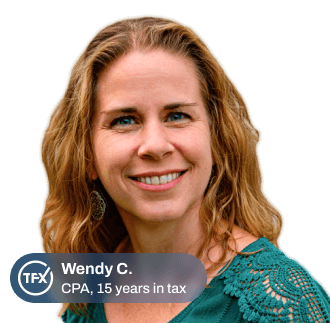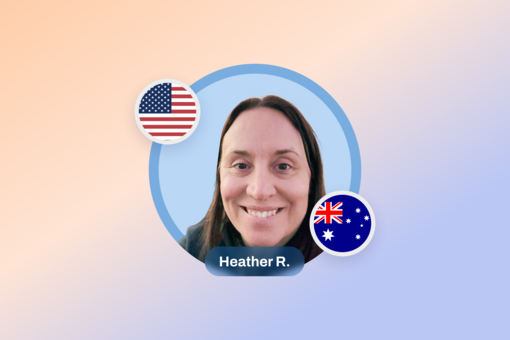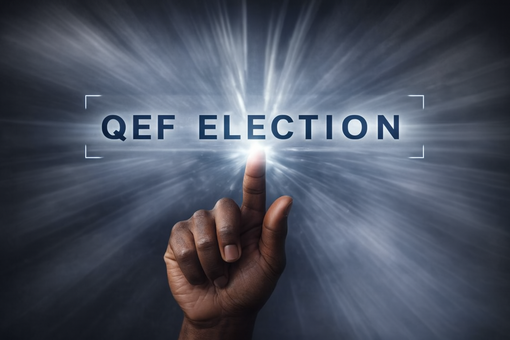Moving to Australia from the US: what Americans need to know

Quick answer: US citizens can move to Australia through 5 visa pathways: skilled migration (subclass 189/190), family visas (820/801), student visas (500), business investment (188), or employer sponsorship (482). Timeline: 6-18 months. Costs: AUD 450–40,000+ depending on visa type.
More than 115,000 US citizens now call Australia home – a number that continues to grow each year. With so many weighing the benefits of life Down Under, a common recurring question is: how can an American move to Australia?
This guide breaks down the practical steps, visa options, and tax considerations for relocating from the US. It’s designed for professionals, retirees, families, and students ready to build a life abroad.
At a glance:
- Americans in Australia: 115,000+
- Processing time: 3-18 months (visa dependent)
- Visa costs: AUD 450 (student) to AUD 40,000+ (parent)
- Top cities: Sydney, Melbourne, Brisbane
- Monthly living costs: AUD 2,700 - 3,500
Why do US citizens move to Australia?
USA citizens must meet Australia’s legal requirements, like health and character checks, along with valid documentation to move to Australia from the US.
Once eligibility is confirmed, the main pathways to long-term residence and citizenship are:
- General skilled migration or employer-sponsored – for qualified workers; occupations on skilled lists may lead directly to permanent residency after satisfying initial visa conditions.
- Partner or family visas – subclass 820 (temporary) → subclass 801 (permanent), or parent and remaining-relative visas – for United States citizens with close ties in Australia.
- Distinguished talent or business visas – for individuals with exceptional skills or substantial investments.
- Student-to-resident pathway – study on a CRICOS-registered course, obtain a student visa, and progress to skilled or employer-sponsored permanent residency.
- Citizenship by conferral (after PR) – after at least one year as a permanent resident and four years of lawful residence (including relevant tests: resides, domicile, 183-day, superannuation fund).
Top Australian visas for US citizens
Australia offers multiple immigration pathways for Americans – whether you're moving for work, study, family, or retirement. Here’s a breakdown of the most common visa options available to those looking to immigrate to Australia from the US.
Visa comparison at a glance
| Visa Type | Subclass | Duration | Cost (AUD) | Age Limit | Best For |
|---|---|---|---|---|---|
| Skilled Independent | 189 | Permanent | 4,000-5,000 | Under 45 | Qualified professionals |
| Skilled Nominated | 190 | Permanent | 4,000-5,000 | Under 45 | State-sponsored workers |
| Temporary Skill Shortage | 482 | 2-4 years | 3,000-4,000 | None | Employer-sponsored |
| Student Visa | 500 | Up to 5 years | 454 | None | Students |
| Business Innovation | 188 | Temporary PR | Varies | None | Investors (750K+ capital) |
| Partner Visa | 820/801 | Temp Permanent | 8,000-9,000 | None | Australian spouse/partner |
| Parent Visa | 103 | Permanent | 40,000+ | None | Parents of Australian citizens |
Skilled worker visas
For professionals under age 45 with experience in high-demand occupations, skilled visas are a leading path. The Skilled Independent visa (subclass 189) offers permanent residency without needing employer sponsorship.
Other options include the Skilled Nominated visa (subclass 190) and Temporary Skill Shortage visa (subclass 482) – the latter valid for up to four years.
Student visas
Student visas are open to USA citizens enrolled in CRICOS-registered programs. You can stay in Australia for up to 5 years and work part-time – currently uncapped due to workforce needs. The visa requires proof of enrollment, OSHC health coverage, and funds to support yourself.
Business and investment visas
For entrepreneurs and investors, the Business Innovation and Investment visa (subclass 188) offers multiple entry paths to Australia through financial investment.
- Minimum capital typically starts at AUD 750,000, depending on the chosen stream and state requirements.
- Successful applicants may later qualify for permanent residency through the subclass 888 pathway.
This is a key route for those researching how to move to Australia from the US with business goals in mind.
Partner and family visas
US citizens with close family in Australia may apply under subclasses 820 (temporary), 801 (permanent), or 103/115 (parent or relative). These visas allow you to reunite with loved ones and settle permanently. Most require proving long-term, genuine relationships and can involve wait times and health checks.
Retirement visas
Although no longer open to new applicants since June 1, 2018, retirees who held a subclass 405 or 410 visa before that date may still qualify for long-term, renewable stays under the retirement visa pathway.
These legacy visas do not provide a direct route to permanent residency but allow eligible individuals to remain in Australia under specific conditions. Your only viable option is a parent or contributory parent visa.
Visa for Green Card holders
Green Card holders can apply using any of the above visa types – as long as they meet the criteria. Keep in mind the potential impact on your US permanent resident status and plan accordingly. Partner visas are a common route for mixed-status couples transitioning to life in Australia.
Your Australian immigration checklist
If you're planning to immigrate to Australia, here's how US citizens can get started.
Step 1: Assess your eligibility and purpose
Assess your eligibility and purpose, and know why you’re moving to Australia from the US – work, study, family, or investment. Visa type, age limit (often under 45), and financial readiness will shape your path.
Step 2: Choose the right visa
Options include Skilled Independent (subclass 189), Partner (subclass 820/801), Parent (subclass 103), and Student visas. If visiting temporarily, apply for an Electronic Travel Authority – valid for up to 12 months with multiple 90-day entries.
Step 3: Gather required documents
You’ll need a passport valid for at least 3 months beyond arrival, plus FBI and state police clearances. Supporting documents may include academic records, financial proof, medicals, or relationship evidence.
Step 4: Submit your application
Most visas are submitted online through the Australian immigration portal. Costs vary – for example, student visa applications currently cost around $454, while parent visas can exceed AUD40,000.
Step 5: Complete health checks and biometrics
Health checks and biometrics are compulsory, so expect a medical exam, chest x-ray, and HIV test after applying. You’ll also submit biometrics – fingerprints and a photo – at a collection center.
Step 6: Receive your visa and make the move
Temporary visas like the ETA are often processed in under 72 hours – others may take months. Once approved, book your flight and prepare for life Down Under.

Where US expats love living in Australia
Can Americans live in Australia? Absolutely, and where you choose to live shapes your entire expat experience.
Sydney
Sydney has 5 million people and costs around $3,500/month, with rent averaging $1,900.
Pros: career opportunities and beach lifestyle. Cons: high prices and heavy traffic.
Sydney, Australia. PHOTO CREDIT: PIXABAY
More diverse and fast-paced than most US cities, but far more outdoor-focused. Excellent healthcare through Medicare once eligible.
Melbourne
Home to 5.2 million, Melbourne’s monthly costs run $3,300, with $1,700 rent. Pros: rich culture and transport. Cons: unpredictable weather, traffic.
Melbourne, Australia. PHOTO CREDIT: PIXABAY
Its artsy, laid-back vibe feels more balanced than the typical US urban rush. Healthcare is well-rated and easily accessible.
Brisbane
With 2.6 million residents, living costs are lower at $2,900/month, and rent is $1,500. Pros: sunny climate and affordable housing. Cons: less nightlife, less diversity.
Brisbane, Australia. PHOTO CREDIT: PIXABAY
Brisbane moves slower than most US cities and emphasizes the outdoors. Healthcare is reliable and well-structured for expats.
Perth
2.2 million people live in Perth, where rent averages $1,400 and total costs $2,800. Pros: coastal lifestyle and weather. Cons: remote location, limited flights.
Perth, Australia. PHOTO CREDIT: PIXABAY
Feels more serene and nature-driven than typical American urban life. Healthcare is efficient and widely accessible.
Adelaide
Adelaide’s 1.4 million residents enjoy low costs – $1,300 rent, $2,700/month total. Pros: safety and affordability. Cons: fewer jobs, quiet social scene.
Adelaide, Australia. PHOTO CREDIT: PIXABAY
Compared to the US, it offers a calm, community-oriented lifestyle. Healthcare services are streamlined with minimal wait times.
(Cost of living data sourced from Numbeo)
Employment opportunities in Australia
Finding a job as a US citizen in Australia starts with understanding which occupations are in demand and how your credentials translate down under.
It’s entirely possible to secure quality employment if your skills match the needs – and if you hold the right visa.
US degrees in Australia: are they valid?
As a US citizen, your university degree and professional experience often align well with Australian standards in fields such as engineering, IT, and finance.
Employers and skill assessors typically recognise US credentials, making it easier to qualify for skilled occupations.
Still, some roles may require additional local licensing or certification to meet Australian professional benchmarks.
Job eligibility under different visas
Moving to Australia is about more than just getting there – you need permission to work once you arrive. Here’s how work rights vary by visa:
- Skilled Independent (subclass 189) – live and work anywhere in Australia without sponsorship.
- Skilled Nominated (subclass 190) – must live and work in the nominating state or territory.
- Employer Nomination Scheme (subclass 186) – tied to your sponsoring employer, granting permanent work rights.
- Temporary Skill Shortage (subclass 482) – allows work for a specified employer and duration.
Each visa has its own criteria, so pick the one that best fits your occupation and lifestyle goals.
NOTE! From 1 July 2025, the national minimum wage will rise to A$24.95 per hour – nearly double the US federal minimum of USD 7.25.
Australian educational system
Moving to Australia for higher education offers US citizens access to world-class public universities and student-friendly cities.
To apply, you must meet student visa requirements like CRICOS enrolment, OSHC coverage, and proof of financial support – with work rights up to 48 hours per fortnight.
As of 2025, the Student Visa (subclass 500) costs AUD1,600 (USD1,020) and allows you to stay up to five years. Learn more and apply via the Study in Australia website.

Taxation and banking: two peas in a pod
A quick guide to what Americans need to manage in their cross-border financial life.
Steps to owning an Australian bank account
- Choose a bank – Larger banks (e.g. CommBank, NAB, HSBC) are more amenable to non-residents.
- Apply early – For CommBank, you can start the application up to 14 days before arrival and activate within 12 months. HSBC allows online signup from the US if you’re a Premier customer.
- Prepare ID – Bring your passport plus at least two secondary IDs (e.g. driver’s licence, utility bill) to meet the requirements under Australia’s 100-point identity check.
- Provide TIN details – As a US tax resident, you’ll need to supply your US Tax Identification Number when opening with AUS banks like NAB.
- Activate and fund – Once your account is open, transfer initial funds (AUD or USD) online or via international transfer services.
Currency exchange and cost comparison
| Australia (AUD) | United States (USD) | |
|---|---|---|
| Mid-market exchange | 1.00 USD = 1.45 AUD | n/a |
| Bank transfer fee | AUD 10–30 per transfer | Same for USD |
| In-branch exchange | Spread of 1.5–3% | Spread 0.5–1% |
| ATM withdrawals | AUD 0–5 domestic; AUD 3 + spread abroad |
USD 0–5 possible fee |
This table compares key costs when transferring or accessing money between Australia and the US. The mid-market rate is the fairest exchange rate, often offered by platforms like Wise. Transfer fees can vary based on the bank or service provider.
Exchange spreads reflect the hidden cost you pay when converting money – Australian banks often charge more. Finally, ATM fees may apply when withdrawing cash abroad or from foreign networks.
Your tax obligations between the US & Australia
- Australia: As an Australian tax resident (tested via physical presence, domicile, 183-day or superannuation criteria), you must file an annual return for income earned worldwide and can enjoy a tax-free threshold of AUD 18,200.
Progressive rates up to 45% apply, plus a 2% Medicare levy. Nonresidents are taxed only on Australian-sourced income with no threshold and a minimum 30% rate.
Due dates: October 31 (self-file); via tax agent by June 5 next year once registered. For authoritative guidance – visit the Australian Taxation Office official site.
- United States: US citizens and green card holders must file Form 1040 annually and report worldwide income, even while moving to Australia. You can reduce or eliminate double taxation using:
- Foreign Earned Income Exclusion (FEIE) – exclude up to $130,000 in foreign wages (2025 cap) via Form 2555.
- Foreign Tax Credit (FTC) – dollar-for-dollar credit on Australian taxes paid via Form 1116. Also, file FBAR (FinCEN Form 114) if foreign accounts exceed USD 10,000 and FATCA (Form 8938) if foreign assets are significant.
Deadlines: April 15, with an automatic extension to June 16 while abroad (2025), and further extension to October 15 with Form 4868 or use our free tax extension service. Taxes owed are still due by April to avoid interest.
Transferring assets and savings
When moving to Australia from the US, consider shifting assets ahead of time to avoid hefty PFIC penalties – especially on US-based IRAs.
Use tools like FEIE and FTC strategically to prevent double taxation. Coordinate the timing of large transfers with tax reporting obligations.
Tips for a smooth transition
Moving to Australia is an exciting chapter – but preparation is key to thriving in your new life Down Under.
→ From slang to social etiquette, Australia has its own rhythm – expect casual conversations with strangers, a sharp sense of humor, and driving on the left side of the road. Embracing these cultural norms will help you settle in faster.
→ Important emergency numbers (e.g., 000 instead of 911)
In emergencies, dial 000 – not 911 – for ambulance, fire, or police services. It’s the national emergency number in Australia, and knowing it could make a critical difference.
→ Time zone adjustment and jet lag
Australia is anywhere from 14 to 17 hours ahead of US Eastern Time, depending on daylight saving – give yourself several days to adjust to jet lag, especially if you're arriving for work or school.
→ Setting up mobile service, internet, and utilities
Providers like Telstra, Optus, and TPG offer prepaid and postpaid mobile plans – set these up early, along with electricity and internet, to avoid delays in your first week.
→ Facebook groups like “Americans in Sydney” or “US Expats in Melbourne” can help you connect with fellow expats who’ve already made the move to Australia and are happy to share advice.
Moving to Australia: what about your US taxes?
Starting a new life in Australia is a big step – but don’t let US tax compliance hold you back.
At Taxes for Expats, we help Americans abroad file accurately and on time, no matter where in the world they relocate. Focus on your move – we’ll take care of your IRS obligations.

FAQ
Difficulty varies by pathway-skilled migration is moderately challenging as you must be under 45, have an occupation on the skilled list, pass English tests, and score enough points. Family and partner visas require proving genuine relationships but no skills assessment. Business visas demand substantial capital (AUD 750,000+), while student visas have simpler requirements. Overall, younger skilled workers face the most straightforward path.
Australia's cost of living is generally 10-20% higher than major US cities, particularly for housing and groceries. Sydney and Melbourne are most expensive at AUD 3,300-3,500 per month, while Adelaide and Brisbane are more affordable at AUD 2,700-2,900 monthly. However, Australia's minimum wage of AUD 24.95/hour (from July 2025) is nearly double the US federal minimum, helping offset costs.
US citizens cannot stay in Australia without a visathere is no visa-on-arrival option for Americans. However, the Electronic Travel Authority (ETA) is simple to obtain online and allows multiple 90-day tourist visits within a 12-month period. For longer stays, you need a temporary or permanent visa such as student, work, or skilled migration visas.
Yes, but Americans need approval from the Foreign Investment Review Board (FIRB) before purchasing. Temporary residents can buy one established dwelling to live in, while new or off-plan properties have simpler approval processes. Permanent residents and Australian citizens can buy property without FIRB approval, similar to local buyers.
Yes, but you need appropriate work authorization. Temporary Skill Shortage visas (subclass 482) allow work for a specific employer for up to 4 years, while Skilled Independent and State Nominated visas provide unrestricted work rights. Student visa holders can work up to 48 hours per fortnight, but tourist visas do not permit work.
The Electronic Travel Authority (ETA) is the simplest, processed in under 72 hours, but only allows 90-day tourist visits. For migration, the easiest pathway depends on your situation: under-45 professionals should pursue skilled visas (subclass 189/190), those with Australian family can apply for partner visas (subclass 820/801), and students can access education visas with relatively simple requirements.
Visa application costs range from AUD 454 for student visas to over AUD 40,000 for parent visas. Beyond visa fees, budget for living expenses of AUD 2,700-3,500 monthly depending on city, plus initial setup costs for housing deposits, furniture, and utilities. Skilled migration visas (subclass 189/190) typically cost around AUD 4,000-5,000.
Yes, through permanent residency pathways including Skilled Independent (subclass 189), State Nominated (subclass 190), Employer Nomination (subclass 186), or Partner visas (subclass 801). After holding permanent residency for at least 1 year and 4 years total residence, you can apply for Australian citizenship by conferral.
Yes, US citizens must file US taxes annually regardless of residence location. However, you can use the Foreign Earned Income Exclusion (FEIE) to exclude up to $130,000 in 2025, or claim Foreign Tax Credits (FTC) on Australian taxes paid. You must also file FBAR (FinCEN Form 114) if foreign accounts exceed USD 10,000.
Yes, all US citizens need a visa to enter Australiathere is no visa-on-arrival option. For short visits (tourism, business), apply for an Electronic Travel Authority online before departure. For migration, work, or study, you must obtain the appropriate visa category. Processing times vary from hours (ETA) to months (permanent residency).
For skilled migration visas (subclass 189, 190, 482), applicants must be under 45 years old at the time of invitation. However, partner visas, parent visas, business investment visas, and student visas have no age restrictions. Employer-sponsored visas may have flexibility depending on occupation demand.
Processing times vary by visa type: Skilled Independent (189) and State Nominated (190) visas typically process in 6-12 months, Partner visas (820/801) take 18-24 months for permanent status, and Parent visas can take several years due to caps. The Electronic Travel Authority processes in under 72 hours but only provides temporary 90-day stays.








